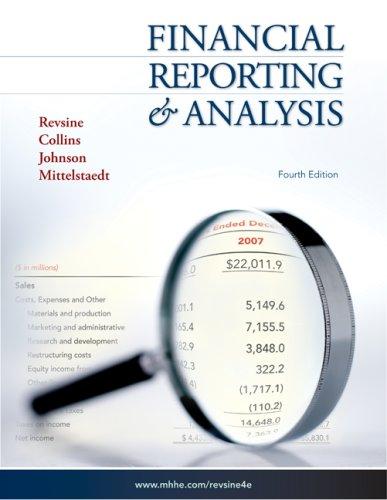The following information appeared in the annual reports of Apparel America, Borden, Inc., and Exxon Corporation. Apparel
Question:
The following information appeared in the annual reports of Apparel America, Borden, Inc., and Exxon Corporation.
Apparel America, Inc. - .
In December 1994 the Company entered into an agreement to pay \($460,000\) to a former executive in settlement of certain litigation. According to the terms of the agreement, an initial payment of \($150,000\) was made in December 1994, with the balance payable in five semiannual installments of \($50,000\) commencing June 30, 1995 and a final payment of \($60,000\) on December 31, 1997. The settlement has been discounted at an annual effective interest rate of 9% to reflect its present value at July 31, 1996. [Excerpt from the company’s 1996 annual report.]
Accruals for environmental matters are recorded when it is probable that a liability has been incurred and the amount of the liability can be reasonably estimated. Environmental accruals are routinely reviewed on an interim basis as events and developments warrant and are subjected to a comprehensive review annually during the fiscal fourth quarter. The Company and the Combined Companies have each accrued approximately \($26\) million (including those costs related to legal proceedings) at December 31, 2000 and 1999, for probable environmental remediation and restoration liabilities. This is management's best estimate of these liabilities. Based on currently available information and analysis, the Company believes that it is reasonably possible that costs associated with such liabilities may exceed current reserves by amounts that may prove insignificant, or by amounts, in the aggregate, of up to approximately \($16\) million.
[Excerpt from the company’s 2000 annual report.
A number ofl awsuits, including class actions, have been brought in various courts against Exxon Corporation and certain of its subsidiaries relating to the release of crude oil from the tanker Exxon Valdez in 1989. Most of these lawsuits seek unspecified compensatory and punitive damages; several lawsuits seek damages in varying specified amounts. Certain of the lawsuits seek injunctive relief. The claims of many individuals have been dismissed or settled. Most of the remaining actions are scheduled for trial in federal court commencing May 2, 1994. Other actions will likely be tried in state court later in 1994. The cost to the corporation from these lawsuits is not possible to predict; however, it is believed that the final outcome will not have a materially adverse effect upon the corporation's operations or financial condition.
(Excerpt from the company’s 1993 annual report.]
Required:
1. What is a loss contingency, and why is it disclosed in financial statements? Which oft he preceding examples represents a loss contingency?
2. What was the December 1994 present value of Apparel America’s settlement with its former executive? What is the July 31, 1996 present value, and where is it shown in the financial statements?
3. Borden has a \($26\) million liability on its 2000 balance sheet for “probable environmental remediation and restoration.” But the company says actual remediation and restoration costs could be up to \($16\) million more than this amount. Why doesn’t Borden’s balance sheet liability include the additional \($16\) million?
4. Why doesn’t Exxon report a dollar amount for its litigation cases like the one reported by Apparel America?
5. Does the lack of a specific dollar amount in Exxon’s cases mean that stock analysts will just ignore the litigation when valuing the company? Why or why not?
6. In its 2002 annual report, Exxon (now ExxonMobil) had more to say about the Exxon Valdez incident:
[O]n September 24, 1996, the United States District Court for the District of Alaska entered a judgment in the amount of \($5.058\) billion. The District Court awarded approximately \($19.6\) million in compensatory damages to plaintiffs, \($38\) million in prejudgment interest on the compensatory damages, and \($5\) billion in punitive damages. ... The District Court stayed execution on the judgment pending appeal. ... ExxonMobil appealed the judgment. On November 7, 2001, the United States Court of Appeals for the Ninth Circuit vacated the punitive damage award as being excessive under the Constitution and remanded the case to the District Court for it to determine the amount of the punitive damage award. ... On December 6, 2002, the District Court reduced the punitive damages from \($5\) billion to \($4\) billion. ...
Based on the information provided, when did Exxon first report a balance sheet liability for the Exxon Valdez litigation? What was the amount of that liability?
7. In October 2007, the U.S. Supreme Court agreed to decide whether Exxon should be required to pay \($2.5\) billion in punitive damages to oil spill victims. Explain how the Court’s willingness to hear the Exxon appeal affects the company’s accounting for this contingent liability.
Step by Step Answer:






